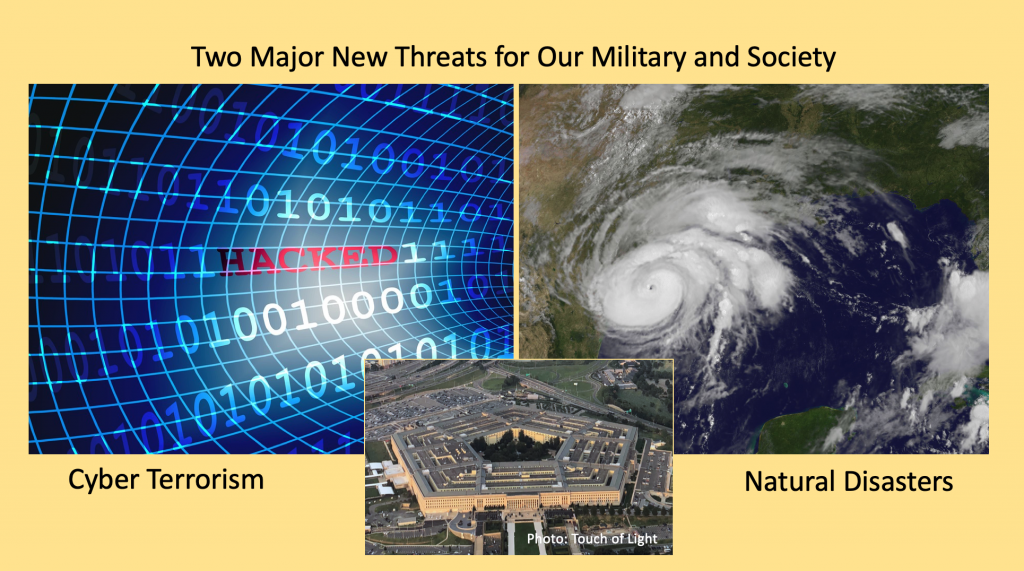2 Defense Threats: Digital and Natural Disaster
Recently I was on a panel at a defense industry conference, www.defensecommunities.org There were lots of good topics such as how military bases of the future might be better designed. However, the takeaway that stayed with me was the diversity of two threats that kept commanders “up at night”: cyber terrorism and natural disasters.
In some ways they could not be more different. One is the invisible world of ones and zeros, the digital universe that runs almost everything these days. The other is the completely physical world sometimes referred to as “acts of God” that unleash the most primitive and powerful forces on the planet. What they both have in common is that each can happen anywhere, anytime, and in somewhat of a new form from all previous manifestations. Each of them could totally disrupt a base, a community, or society. How do we protect against such threats?
I was on a panel titled, “When Disaster Strikes: What Community and Installation Leaders Need to Know about Emergency Preparation, Response, and Recovery at the Local Level.”
It started with a first-hand account by the Commanding Officer at Tyndall Air Base in the Florida panhandle which was taken out by a direct hit from Cat 4 Hurricane Michael last October. The eye of the storm went directly over them taking the roof off their shelter. The details were riveting as he described the challenges posed by relocating 11,000 people and the dozens of F22 fighters based there, and following the storm when they had no communication; the cell phone towers had all been destroyed. Their training, resourcefulness, and discipline got them through it. Restoring their mission readiness was the top priority at the same time dealing with all the people issues on base and in the surrounding community. He made it clear that they would rebuild the base, learning from the experience to build it better.
When my turn came as the last speaker, I made the case that storms will likely be more severe and unusual compared to the patterns we have come to expect. We will continue to get record rainfall which correlates with a warmer ocean and more evaporation. Sea level will keep rising and will accelerate in the coming decades. Whenever we have the opportunity to rebuild coastal installations like Tyndall, estimated to cost two billion dollars, we not only want to build them with the lessons from past storms, we also need to design and build them with the awareness that weather patterns and sea level are changing. Planning for natural disasters of the future is not necessarily the same as defending against the last one. That point seemed to resonate and hit the target for many.
In a relaxed moment at one of the receptions, a retired Colonel commented, perhaps even reflected to me how the “battle space” had evolved. Since ancient times, battles were fought between nation states. Then, particularly in the last half century or so, we have seen the emergence of terrorists, either as surrogates for enemy nations or truly rogue players, presenting a very different challenge. Now in the last couple of decades the most powerful and elusive threats are likely in the form of digital disruption and climate change.
One commanding officer flatly stated that he believed the key battle of the future would happen in cyberspace. For example, someone disrupting our electrical grid, GPS networks, air traffic control, key industrial sectors, or even a more direct move on the Pentagon or key military bases. It was a provoking thought.
We typically think of threats to national security as in the form of an Osama Bin Laden and Al-Qadea, or the threat of a North Korean nuclear attack. But at least with those threats, they can be assessed in terms of their troop strength, weapons, and position. Difficult, but at least discernible. Digital threats and natural disasters are different.
I can’t weigh in on the defense required to deal with cyber attacks. But regarding climate change, I can say we must begin planning and adapting for more extreme weather, rising seas, and the global disruption they will cause.

